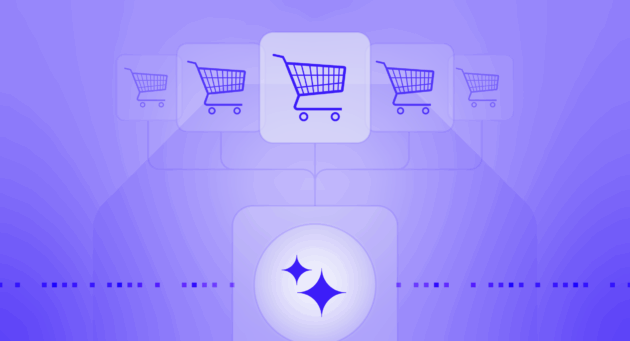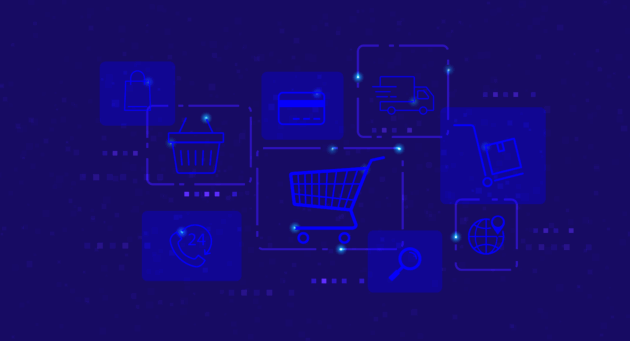Roses are red, violets are blue, Valentine’s Day 2019 is coming. Is your marketing strategy ready?
Throughout the year, Criteo analyzes a massive amount of commerce data surrounding major seasonal periods to identify the trends and opportunities. Valentine’s Day is high up on the list of holidays that affects shopping behavior around the globe. For this analysis, we looked at retail data the US and in Europe (the United Kingdom, France, Spain, the Netherlands, and Russia).
If you’re a brand trying to capture more consumer dollars around Valentine’s Day, it’s crucial to plan your marketing strategy well in advance. Here are the top insights to help you get your marketing campaigns in shape for the big event:
1. Flowers and gift sales go into full bloom.
Flowers and gifts, including roses, chocolate dipped strawberries, stationary, and gourmet products and baskets are hot, hot, hot around Valentine’s Day. In the US, a whopping 9x more flowers than usual were sold online on Monday, Feb. 12, 2018, just two days before Valentine’s Day. Across Europe, 7x more flowers were sold on that date.
In 2017, the spike occurred just one day before, on Feb. 13, 2018. On Valentine’s Day itself, 300% more flowers than usual were ordered in the US, suggesting great confidence in same-day delivery. European shoppers are even more confident: 400% more flowers than usual were ordered on Valentine’s Day 2018 in the region.
Historically, Criteo data shows that the number of days between the weekend and the event itself can impact sales spikes — and it looks like the more room the better:
- In 2017, the purchasing window was shorter (Feb 14 fell on a Tuesday, just two days after the weekend), and the sales spike was lower.
- In 2018, the window between the weekend and the holiday was larger by a day (Wednesday Feb 14 came three days after the weekend), and the spike was slightly fatter.
- 2019 will be interesting to watch, because Valentine’s Day will be four days after the weekend (on Thursday, Feb 14).
No matter what happens in the run up to Valentine’s Day 2019, look for other romantic retail categories, like lingerie and jewelry, to heat up, too.
2. Sales start rising a full week before.
Valentine’s Day happened on a Wednesday in 2018, so most lovers buying online placed their orders a few days ahead and before the weekend. In both the US and in Europe, sales really started to surge on Feb. 6.
Valentine’s Day Shopping 2018 – US
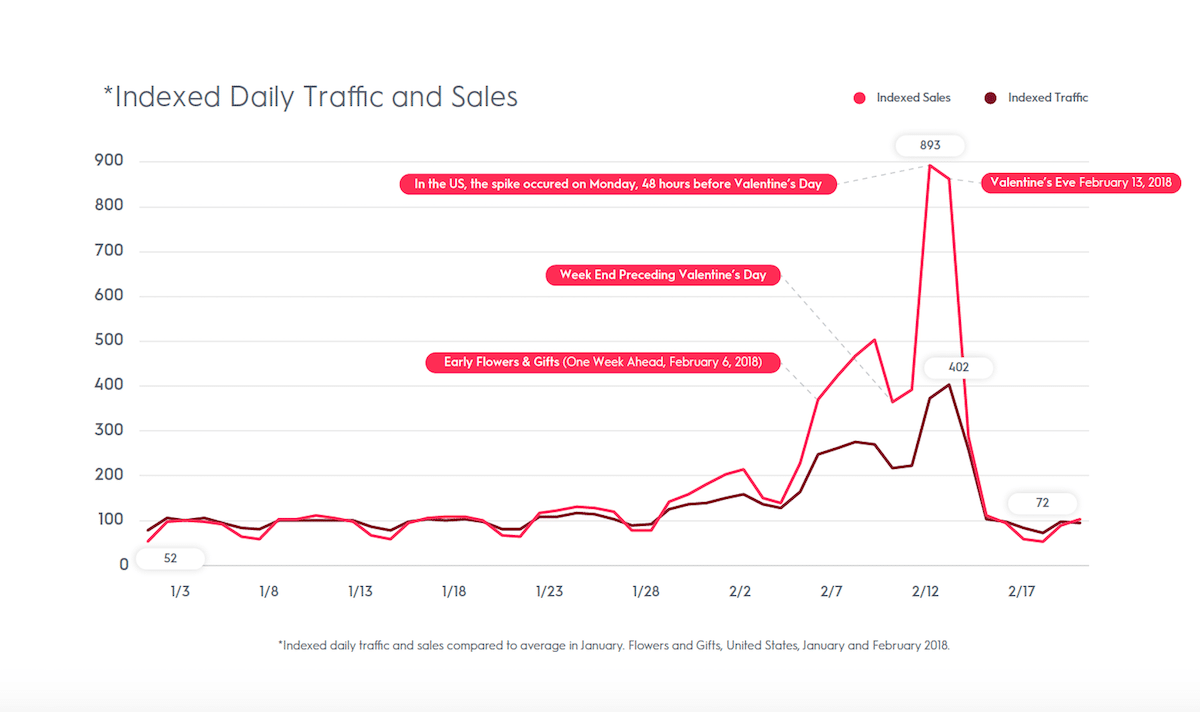
Valentine’s Day Shopping 2018 – Europe
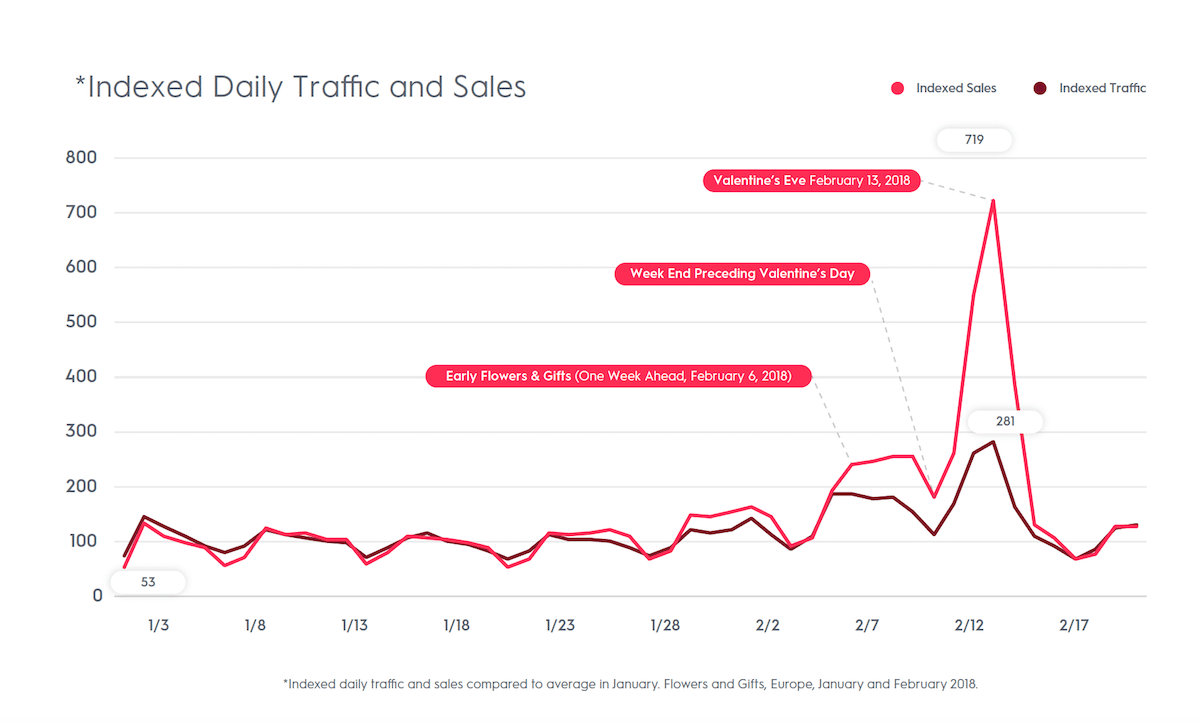
3. On-the-go admirers buy on the weekends, and last-minute lovers go mobile.
During the weekend, the share of orders made on mobile devices increased from 32% to up to 53% in the US, and from 25% to up to 47% in Europe.
United States
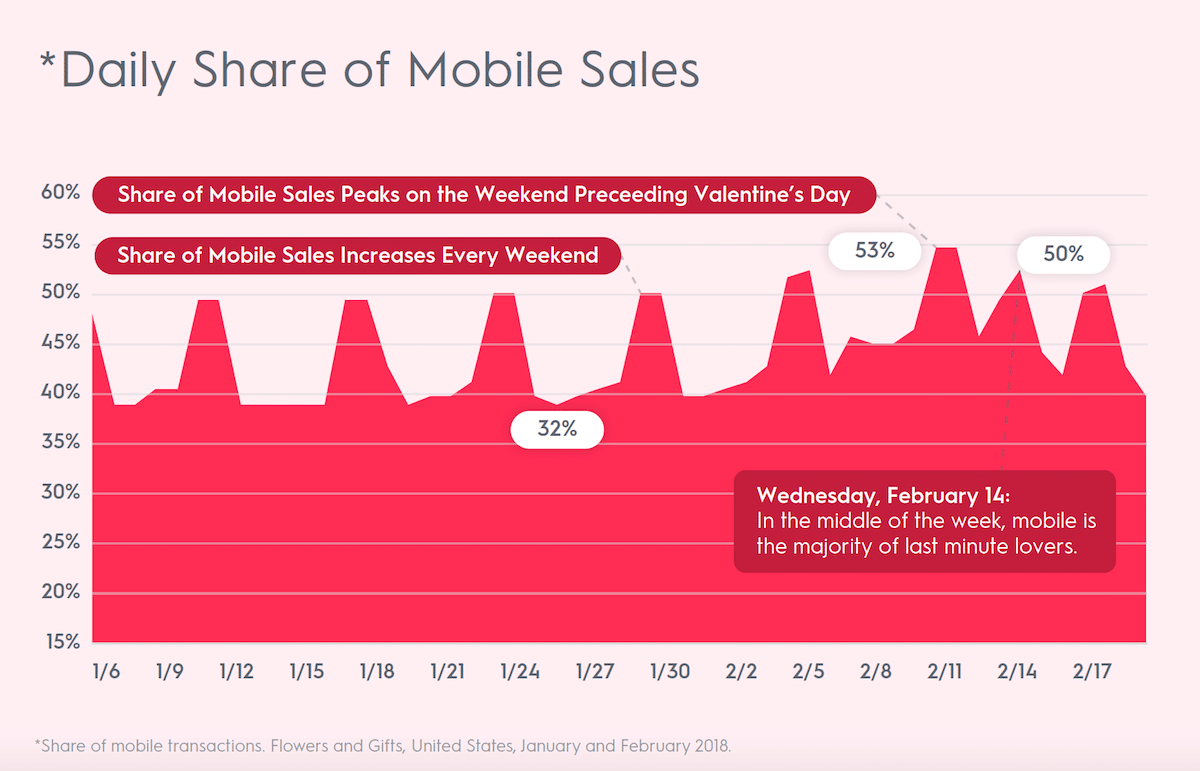
Europe
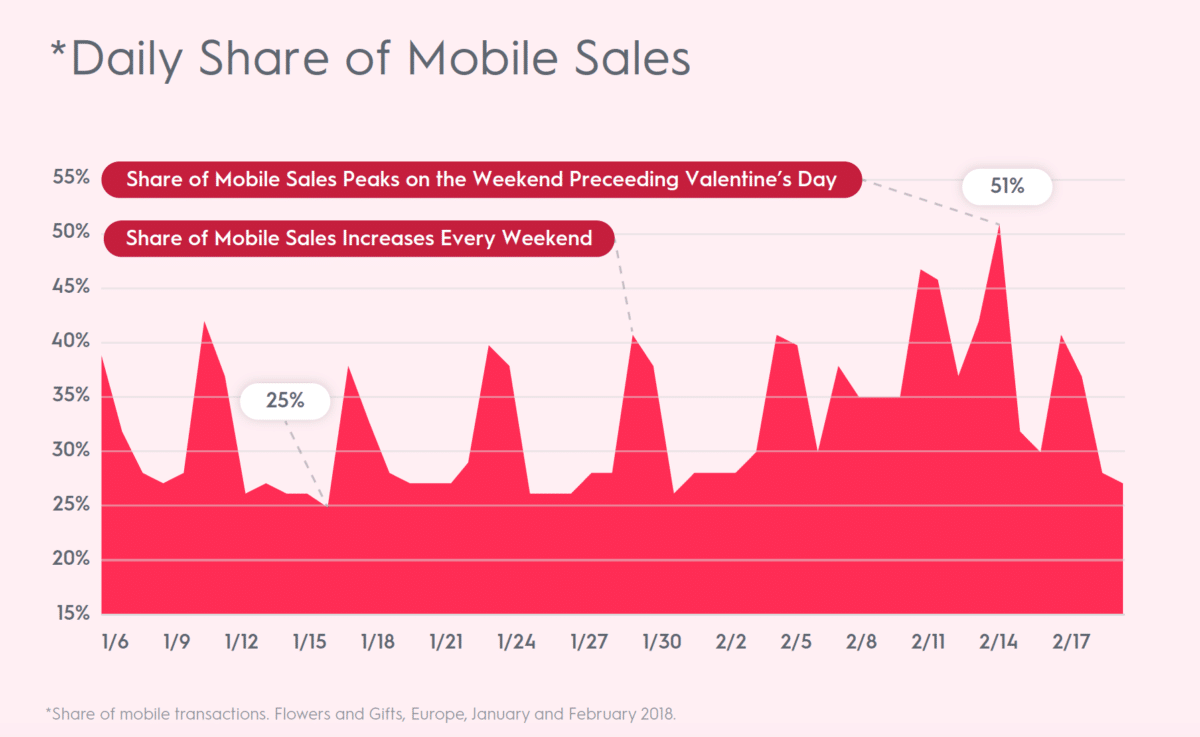
On Valentine’s Day, even if it’s the middle of the week, half of all transactions are made on mobile devices in both the US and in Europe.
4. Conversion rates surge in the days leading up to the main event.
In the US, conversion rates climb up to 164% higher than usual in the days leading up to the event, and up to 187% higher than usual in Europe.
United States
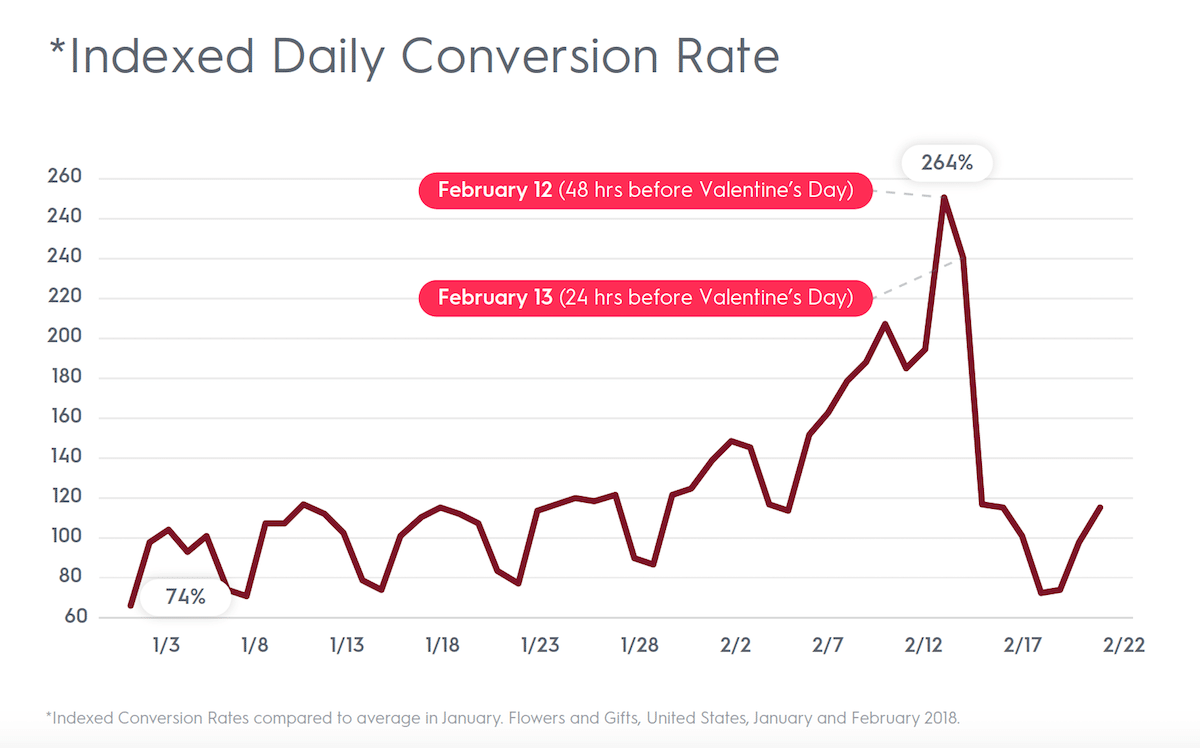
Europe
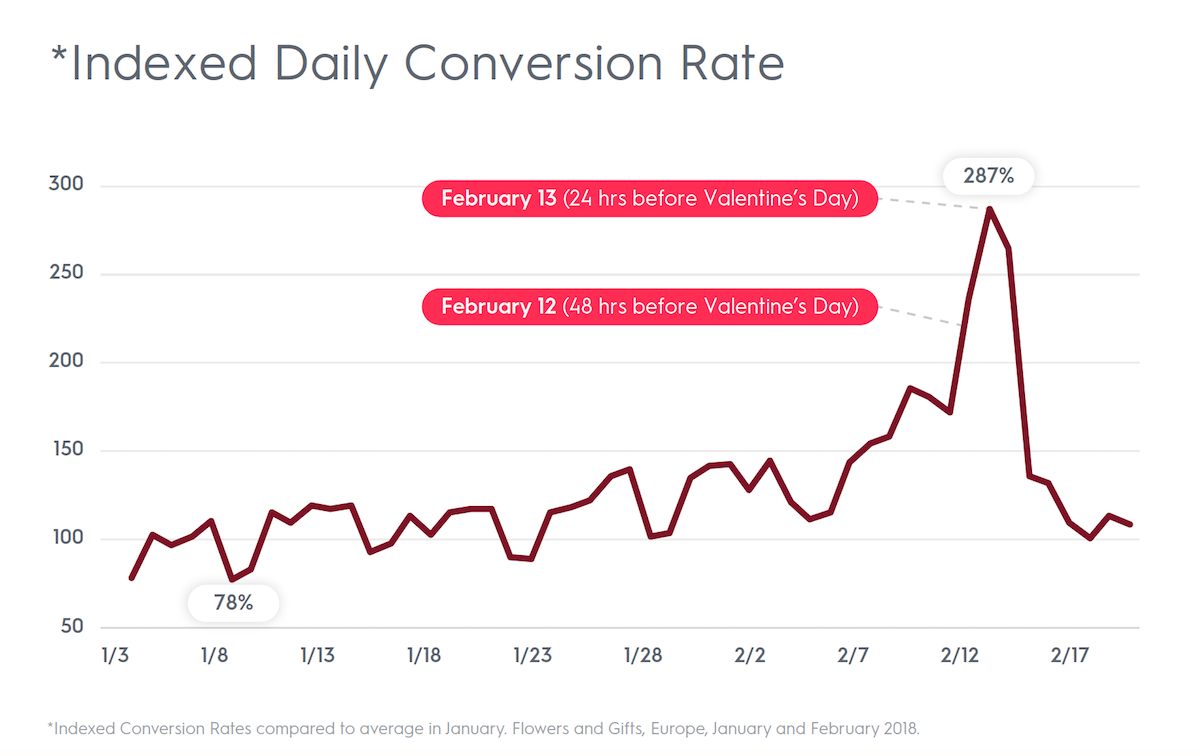
Daily sales are back to normal the very next morning, and it seems most don’t appreciate a late bouquet: Few Valentine’s Day flowers are replaced a week later.
5. Average order values rise high the day before.
In the US, average order values climb up from an average of USD 55 in January to USD 70 for day-of purchases. In Europe, average order values go from an average of 42 Euros in January to 60 Euros for last-minute orders.
United States
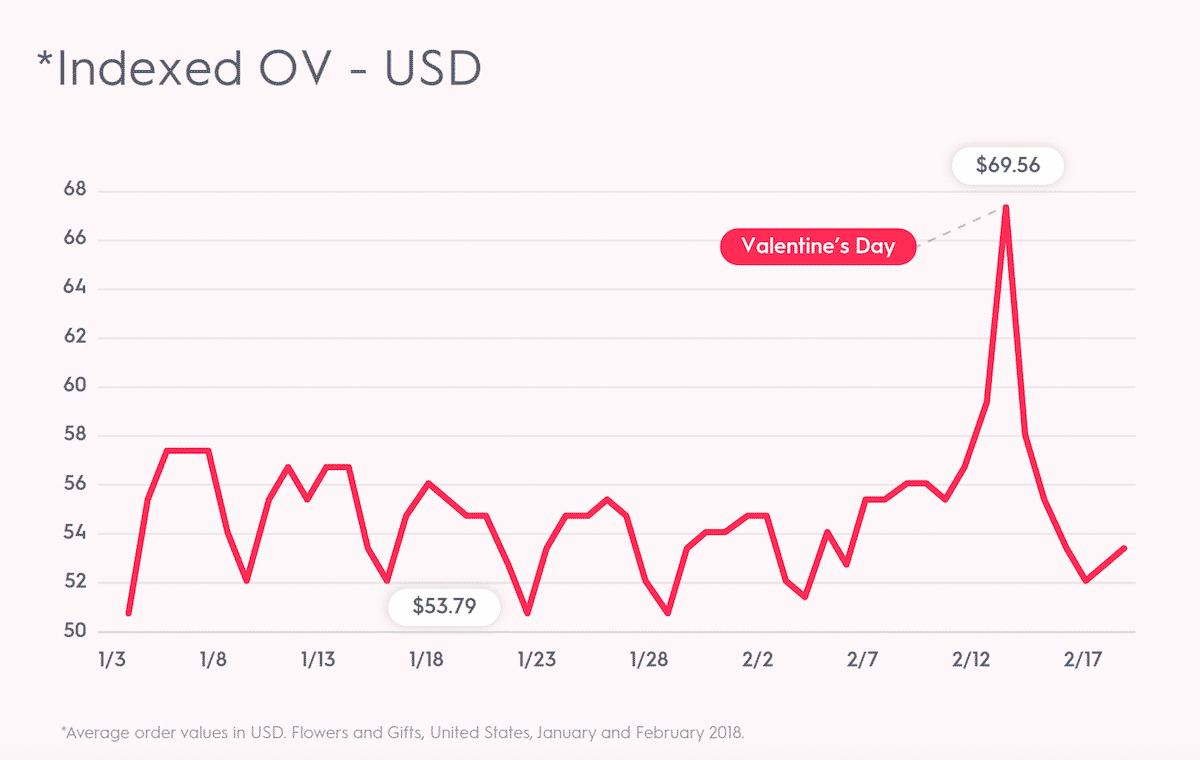
Europe
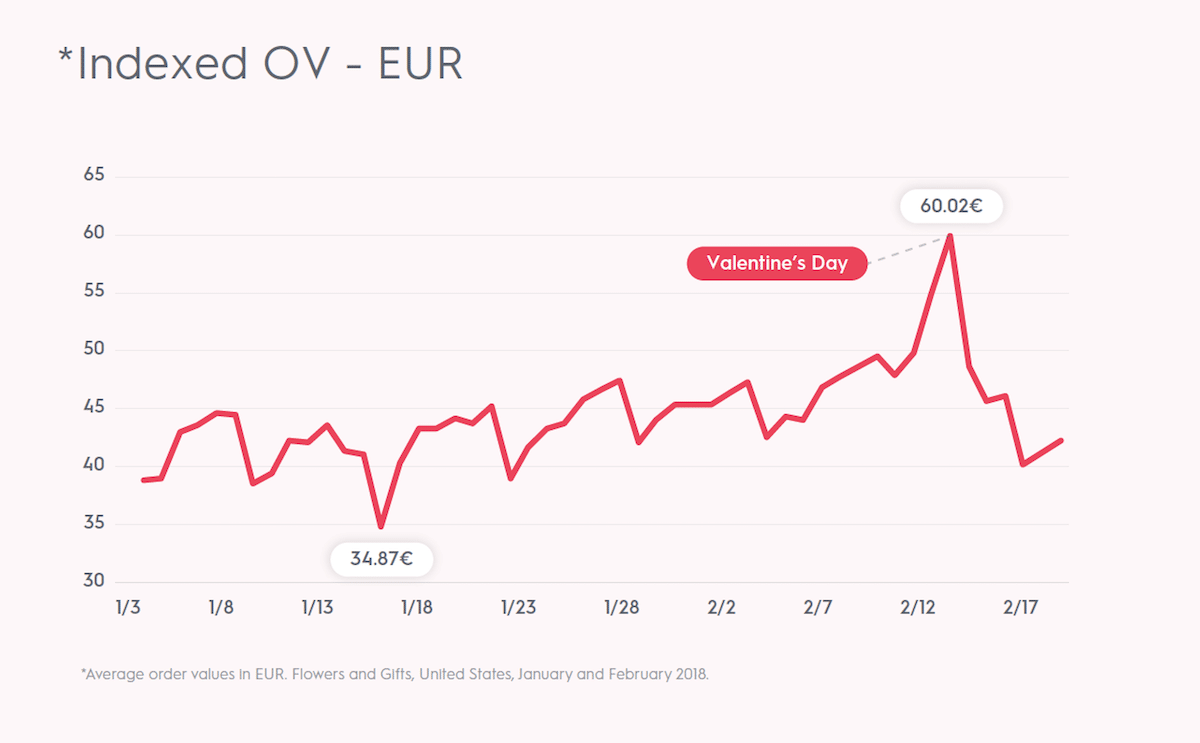
The amount spent on flowers return to normal the following day, when premium spend drops.
Top Takeaways for a Most Memorable Valentine’s Day
1. Consider running uncapped retargeting campaigns during key periods.
The three days between the weekend before Valentine’s Day all the way through Valentine’s Day itself (Monday Feb 11th – Thursday Feb 14th, 2019) are a great opportunity to capture last-minute shoppers who buy gifts like flowers and chocolates.
2. Optimize your mobile presence to take advantage of on-the-go purchases.
Especially during the weekend prior to Valentine’s Day, spontaneous gifts like flowers and chocolates should be on responsive landing pages that make it as easy as possible to convert.
3. Personalize your marketing for each shopper (not their device).
By connecting online and offline data sources, you can deliver the most relevant and engaging ad experiences.







